Small electric cars designed for urban use have become one of the top priorities for automakers in recent months. The Dacia Spring paved the way for so-called “affordable” 100% electric mobility. With the very small Hyundai Inster featuring an original style, the South Korean automaker Hyundai is tackling already well-established competitors, notably the new Citroën ë-C3. Here is our test drive of the 71 kW/95 hp Hyundai Inster in its four-seater version equipped with a 49 kWh battery and “Creative” trim.
The small Hyundai Inster electric car with its modern SUV design, but at a very reduced size, was designed for the city, knowing that it is the Hyundai Casper, the model sold in South Korea since 2021 in thermal version, before being offered in 100% electric.
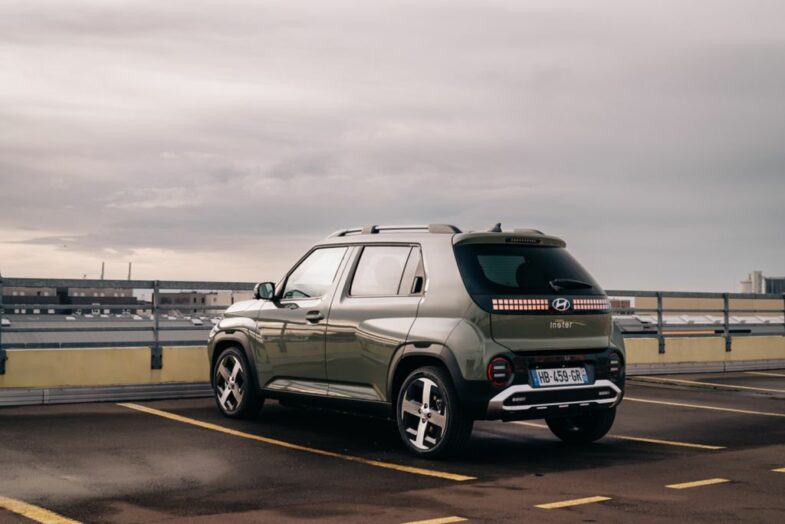
As you may have guessed, for Europe, the Casper has been renamed Inster. Before taking the wheel of the Hyundai Inster in Le Havre for its test drive, let’s start with the presentation of its design.
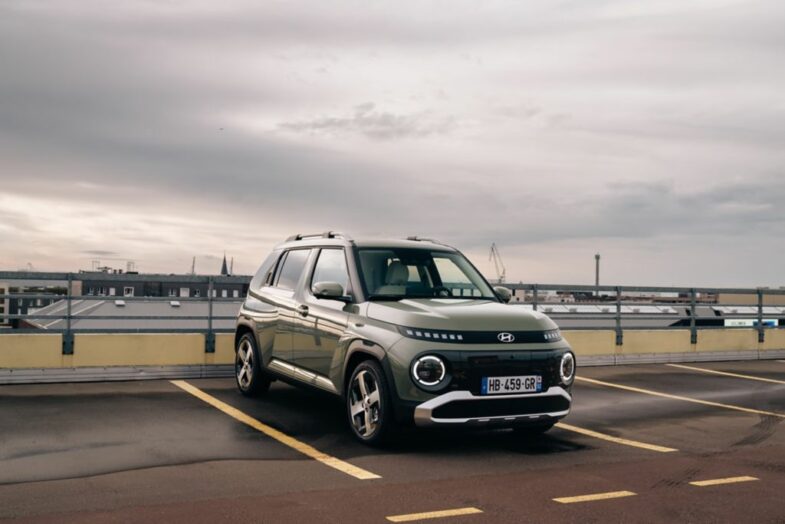
The new Hyundai Inster electric car measures 3.825 m in length, 1.610 m wide, and 1.575 m in height, with a wheelbase of 2.58 m. In terms of design, the small Hyundai Inster SUV reveals a “mix of genres” with, always, the pixel look of the Ioniq 5, even retro, for its front and rear optics.

For the rest, the Hyundai Inster features a luminous signature formed by two large round optics, curves, and other marked features. All these design choices aim to offer a small electric car with a robust and ultra-modern style. However, visually, the Hyundai Inster SUV appears very tiny, but it hides its true nature well… In our eyes, it is painted in a dark shade, in “Dusk Blue” or “Abyss Black,” that the Inster is the most attractive, as it is more homogeneous in terms of visual rendering. Why? Simply because the wheel arch protections blend in with the rest of the body. Additionally, the pixels, other lights, and metallic-looking bumpers stand out impressively, day and night.
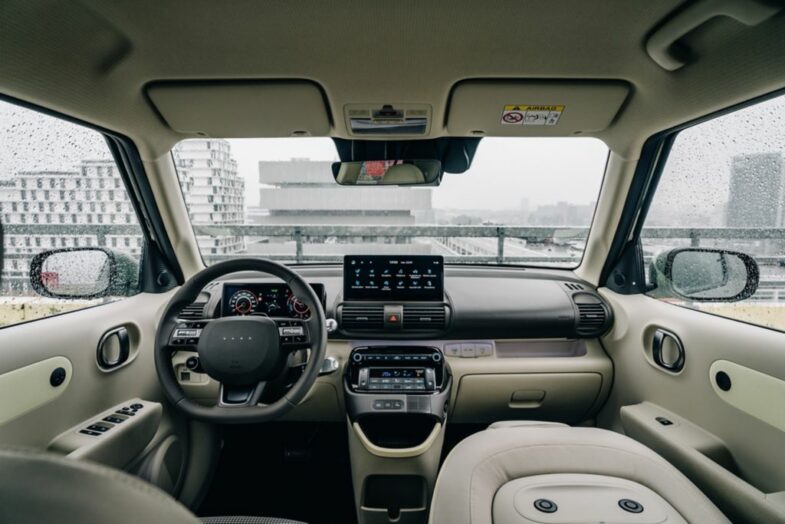
Inside the Hyundai Inster, it is a pleasant surprise with a rather mid-range atmosphere of very good taste. A 10.25″ digital instrument cluster is offered from the first trim level “Inster,” which is significant, especially as a 10.25″ touchscreen, is also offered as standard. All the Inster’s controls fall easily to hand, as Hyundai is known for its vehicles with excellent ergonomics.

It is a pleasure to discover a pleasant atmosphere, similar to the Ioniq 5. Despite its small size, the interior space is interesting, while the material quality is adequate. On this type of vehicle, savings must be made at all levels to achieve an aggressive final price, but Hyundai, as an Asian manufacturer, masters this kind of requirement.
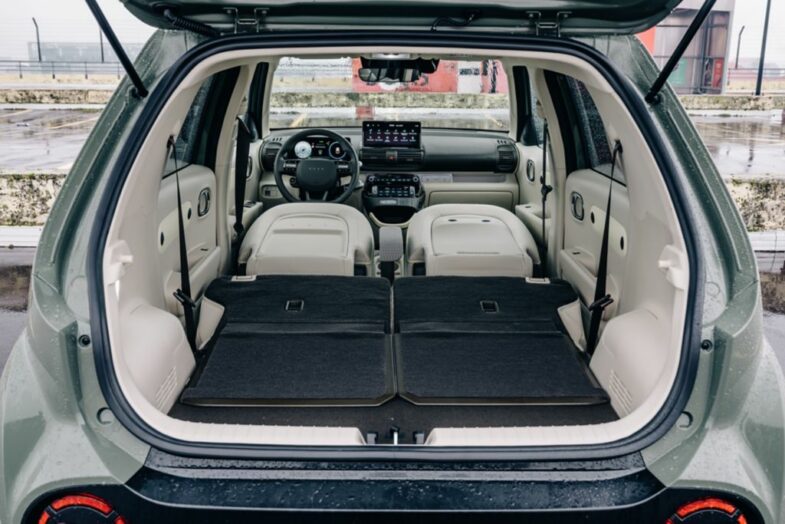
The Inster is also “smart” with, in particular, a loading capacity ranging from 238 to 351 liters, thanks to a sliding rear bench. Additionally, the front seats can be almost fully folded down for even more space, for moving from one tiny house to another?

Once seated behind the wheel of the small city car Hyundai Inster, you feel well installed. However, be careful for tall people who could quickly feel logically cramped. In the back, it is very surprising, with a completely flat floor and generous space. The Inster’s wheelbase (2.58 m) is one of the strengths of this 100% electric city car. Time for the road test, in the city and outside the Hyundai Inster.
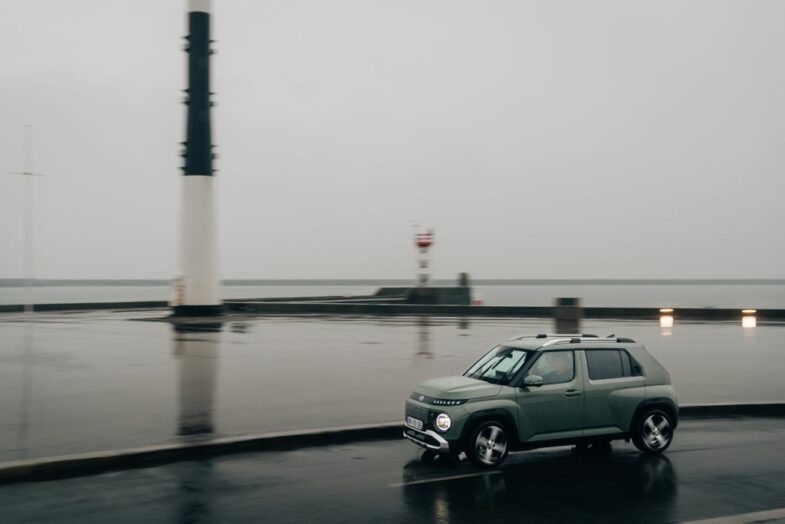
In the “Tetris city” of Etretat, it takes only a few kilometers to realize that the small 100% electric Hyundai Inster SUV finds its “favorite playground” there. In this respect, this last expression is perfect for defining the fun driving sensations felt in the city at the wheel of this funny car. As small as it is, the elevated city car offers a high driving position. Enough to apprehend the dangers of the “urban jungle” with serenity. The Inster’s carefully shaped hood almost makes us believe we are driving a G-Class, relatively speaking.
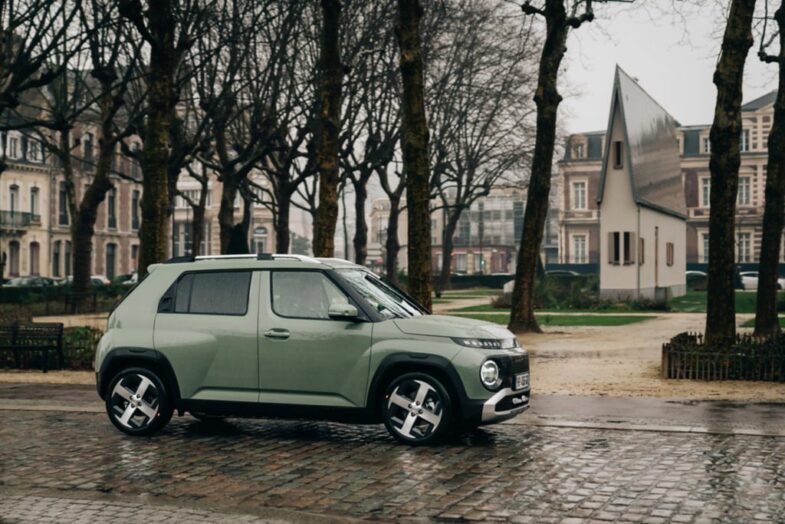
With its 1.610 m width, the Inster goes everywhere. Add to this a turning radius of 5.3 m and you get a well-designed mobility tool. Additionally, the comfort felt on board the Inster is very good, with suspension neither too firm nor too soft. For even more comfort, we would have appreciated softer contact zones for the knees and elbows. To return to this funny little vehicle, which is not pejorative, the Inster is so small that it could almost be mistaken for a license-free car.
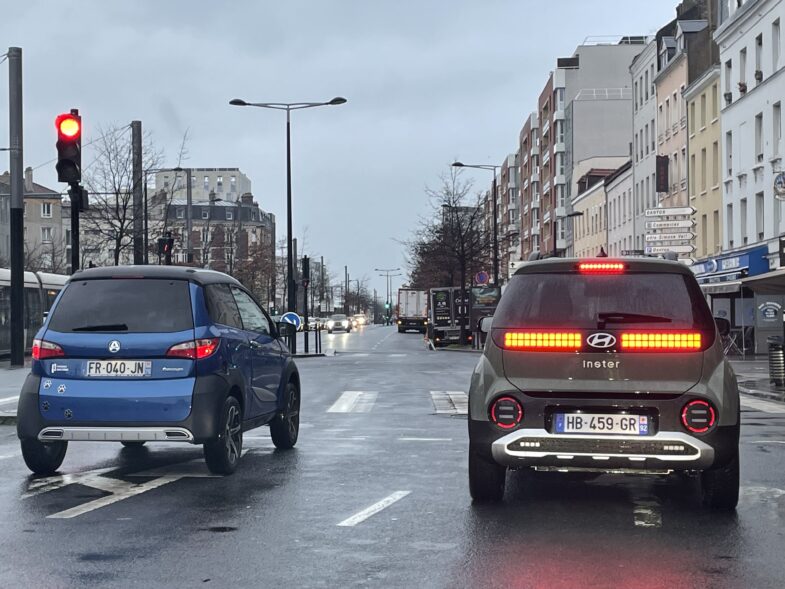
Still in the city, among the good points to add to the Inster, we appreciated its safe and informal braking feel, as well as the display, in the instrument cluster screen, of the views on the blind spots, this in “live.” On this last aspect, all Hyundai vehicles can enjoy it, depending on the models or as an option. For us, this device should be mandatory, via the future GSR 3 standard.

It would prevent many accidents in the city, where cyclists, motorcyclists, scooter users, to name a few, share an increasingly limited space. Note that on the Inster, this camera/screen blind spot display is unfortunately part of the options (“Safety Pack“: €1,050), only on the “Creative” trim level. In “Executive,” the “Safety Pack” is standard, but on the Inster Cross, the model with a 4×4 design, the “Executive” trim is only offered on the Inster Cross.
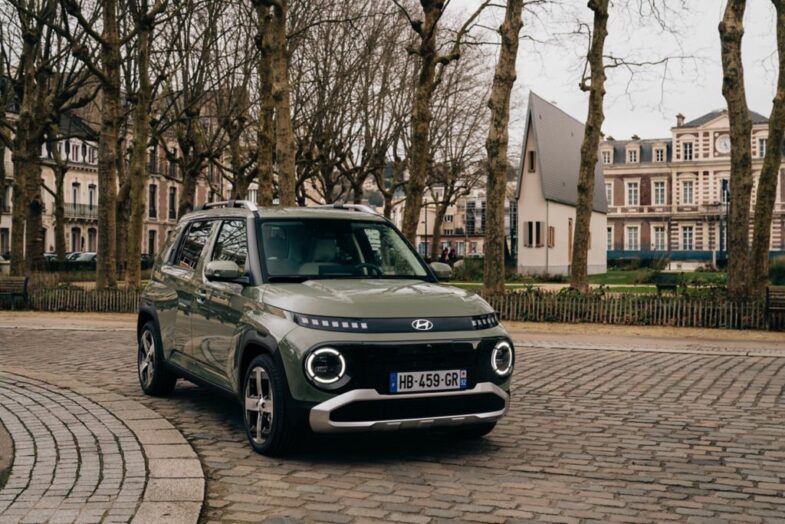
As for the different levels of energy recovery during braking, we would have appreciated more simplicity. There are too many levels offered. Two more or less strong levels and the i-pedal (standard on all trims) would have sufficed, especially as we quickly get lost with the paddles on the steering wheel that allow selecting one of the energy recovery levels during braking.
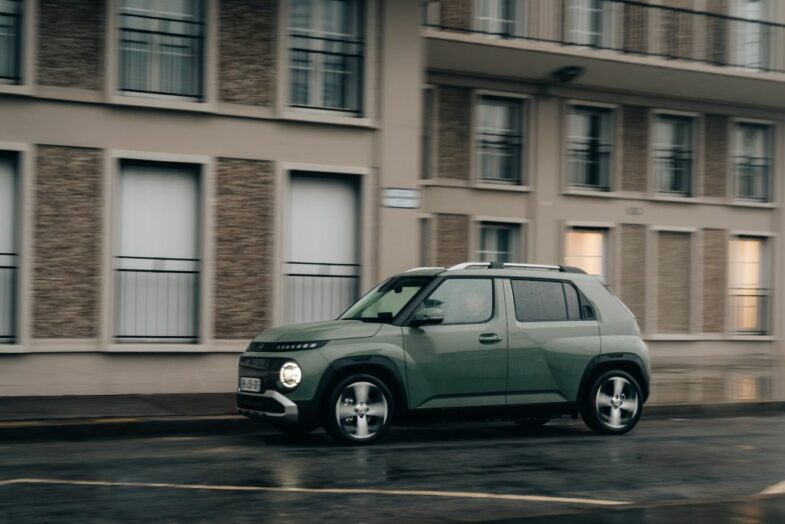
As an electric car, the Hyundai Inster, without being a “lightning bolt,” is dynamic enough to have fun at a green light, but we would have liked more “boost” effect. We come to the limits of the small 100% electric Hyundai Inster.

Indeed, as you may have understood, outside the city, the Inster is less comfortable. Highways should be avoided, as this small electric car lacks dynamism. On the secondary road network, don’t panic, the Inster “gets the job done,” but you will need to take precautions, drive “cool,” approaching corners. At a constant speed, meaning the maximum allowed, the Inster, weighing 1,380 kg, does not suffer from notable defects. We have experienced much worse during tests of other electric cars. With 3 passengers on board and the small trunk full, this time, you will need to be vigilant and not ask too much of it.
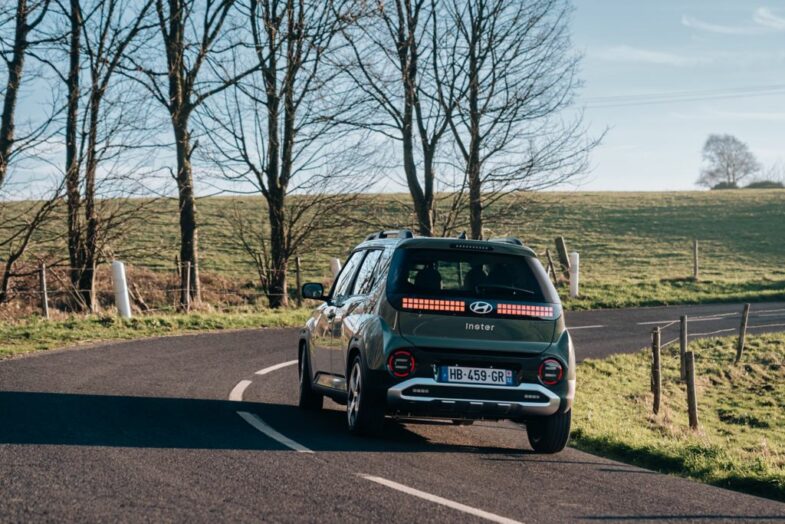
In terms of performance, they are anecdotal, because we don’t buy a mini-electric city car to play “Fast and Furious.” 71 kW/95 hp power for the Inster, 147 Nm of torque, and a 0 to 100 km/h achieved in 11.7 s, for a top speed of 140 km/h.
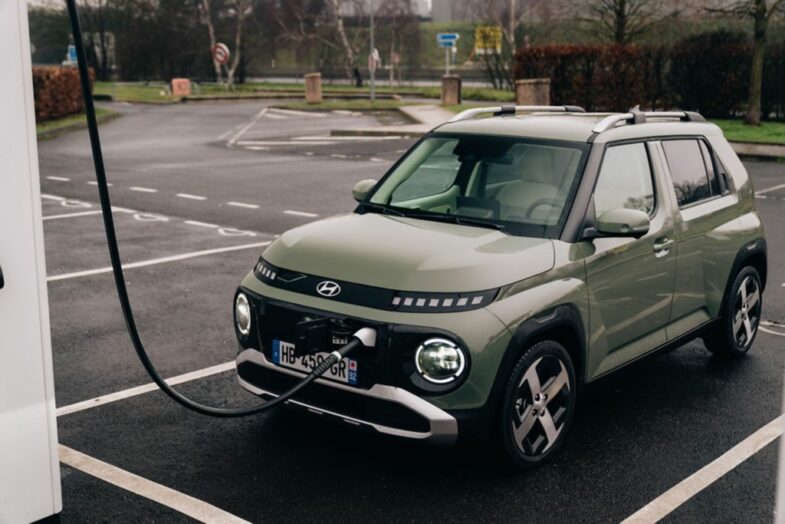
We come to the consumption of the Hyundai Inster. During our test conducted mainly in Normandy, in Le Havre, in the city, then towards Etretat, via the secondary network, we recorded a good 17.2 kWh/100 km. This gives, in real autonomy, according to our calculations which are not scientific, 286 km, against 327 km (mixed cycle – in approval process) according to the manufacturer. Hyundai communicates, in terms of consumption, on 15.1 kWh/100 km for the Inster “Creative” with 17-inch wheels.

To recharge the Hyundai Inster’s battery, an 11 kW cable is provided as standard. At home, count on about 17h00 of charging on a standard outlet (2.8 kW), to go from 10% to 100% battery. On a 50 kW charging station, it takes less than 1h00 to charge the battery from 10% to 80%.
Finally, to conclude our test of the Hyundai Inster, which is not eligible for the ecological bonus in the 4-seater version, unlike the Inster, it should, as the expression goes, find its clientele for a 100% urban use as a second car. With its “funny” design, you either love or hate the Inster. We just like it, knowing that we really had fun driving it in the city during our test. The prices of the Inster start, in France, at €25,000 (trim “Inster” – battery: 42 kWh) and can reach €29,250, in “Creative” trim (battery: 49 kWh), which is the model we tested.
The editorial tem
Photos: Hyundai et LesVoitures.com / TheCarsNews.com

